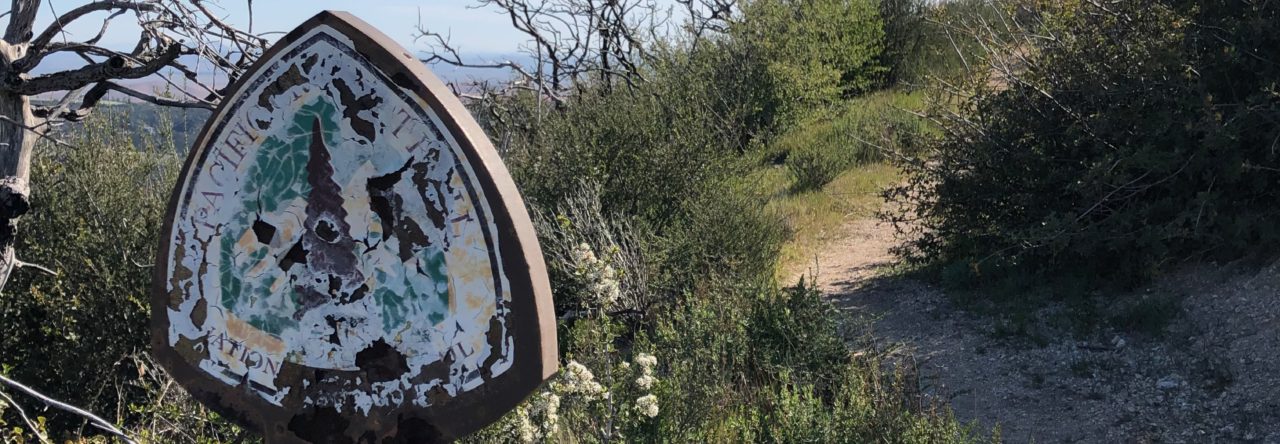It was 2019. I had a goal – to hike the Pacific Crest Trail. The Plan was simple: find someone to go with me, gather my gear and go.

Mind you, at age 65, I’d NEVER backpacked. But it couldn’t be all that hard. Could it?
I had all the necessary gear (and more that wasn’t but that’s another story.) My mind was made up. I’d found a new friend, to go with me, Debbie.

The date was set. As well-laid plans go, there were conditions made by my new hiking partner. She imagined that the start of the Trail, near the Mexican border, would be mobbed with Cartel waiting to beset and besiege us poor women hikers. It was decided that her brother and wife would join and protect us. I’m not sure what kind of defense he would have deployed except maybe hurl disparaging and disrespectful language at the desperados.

The first day was exhilarating! Our first foray was three days two nights. It was a good way to start, affording me my first ever backpacking experience. I was frustrated at myself for how slow I was compared to the others. I really thought I was prepared! It seemed they did try to slow down a bit, but they would stop to rest while I caught up. How fair is that ? They get to rest much longer than me! And I was the one needing a long break!
After a couple weekend hikes protected by big brother, we were ready to move ahead on our own. Mind you, Debbie and I are still just getting to know each other. But sharing a two-man tent, one gets to know the other rather quickly. There was so much sass and laughter between us, we got along well.
Grand ideas of 20 mile days. We were so prepared! Hiking, exercising, planning. Debbie was convinced we would be completing the trail as thru-hikers in one year. She’s the optimistic-adventurer, I’m the cautious-practical one. After covering 40-50 miles, reality set in. I did some calculations and I informed Debbie that at our speed, without any breaks or even Nero days, we may finish by January! Grudgingly accepting reality, she agreed to a two year plan.
At the beginning of 2020, we had our permits in place and were geared up to go all the way. Then Covid hit. Well, maybe a three-year plan will have to do.

In 2021 our target was 1200 miles. Again, reality brought us to about 800 miles. But it was a beautiful reality. Starting in northern CA, going Southbound (SOBO) we gained trail legs for the approaching Sierra and the daunting passes. Successfully fulfilling our much anticipated hike through the Sierra, we officially ended 2021 with cumulative 1662 miles of the 2650 total PCT miles.
Set a goal – make a plan. Sometimes the best you can do falls short of your goal. So what? You started and tried. More than the majority of people! We have come to accept ourselves and the pace we enjoy. It isn’t a race. It’s a journey. No shame because we are still out there…enjoying ourselves.




